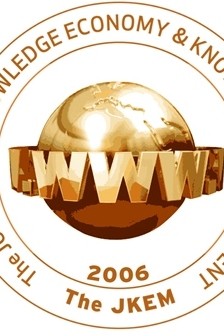THE EFFECT OF TECHNOLOGICAL AND COMMERCIAL VIABILITY ON MICROSOFT TAIWAN INNOVATION COMPETENCY
Innovation competency and Technical innovation.
THE EFFECT OF TECHNOLOGİCAL AND COMMERCİAL VİABİLİTY ON MİCROSOFT TAİWAN INNOVATİON COMPETENCY
___
- Afuah, A. (2003). Innovation management: Strategies, implementation, and profits, and ed. New York: Oxford University Press.
- Business Review, Cambridge, MA: Harvard Business School Press.
- Cheng-Ping Shih, Jocelynn Gutierrez (2011), Measuring Technical Innovation Competency of Casa Pella Company in Nicaragua, Human Resource Development in Asia: Capitalizing Human Expertise for Greater Innovation & Creativity, 10th International Conference of the Academy of HRD (Asia Chapter), Kuala Lumpur, Malaysia , December 3 – 6, 2011.
- Drucker, P. F. (1985). “The discipline of innovation,” In innovation, edited by Harvard
- Kerle, Dr R. Creativity In Organizations - How can creativity become a prime contributor to the strategic objective of the organization (2011)
- Prajogo, D. I. & Ahmed, P. K. (2006). Relationships between innovation stimulus, innovation capacity, and innovation performance. R&D Management, 36(5), 499-515.
- Rogers, E.M. Diffusion of innovations. 4th ed. New York: Free Press, 1995.
- Romijn, H. & Albaladejo M. (2002). Determinants of innovation capability in small electronics and software firms in southeast England. Research Policy, 31, 1053-1067
- Shih, C. P. & Tseng, D. L. (2009). An Econometrics Approach to Evaluate the Successful Factors on Innovation Competency on Microsoft Taiwan-Innovation in Organization. The 2009 International Conference on Human Resource Development, Graduate Institute of International Human Resource Development, National Taiwan Normal University
- Trott, P. (2005). Innovation Management and New Product Development, 3rd ed. Australia: FT Prentice Hall.
- Van der Panne, G., van Beers, C. & Kleinknecht, A. (2003). Success and failure of innovation: a literature review. International Journal of Innovation Management, 7(3), 1-30.
- Yayın Aralığı: Yılda 2 Sayı
- Başlangıç: 2006
- Yayıncı: İbrahim Güran YUMUŞAK
A HISTORICAL STUDY OF HUMAN RESOURCE DEVELOPMENT LESSONS FROM THE GALLIPOLI CAMPAIGN
THE EFFECT OF TECHNOLOGICAL AND COMMERCIAL VIABILITY ON MICROSOFT TAIWAN INNOVATION COMPETENCY
- CHENG, Cheng-Ping Shih, Ping SHIH, Ya-Chung Hung, - YA, Chung HUNG
COMPETITIVE ANALYSIS OF BRAND MANAGEMENT
Mehmet Emin OKUR, Mehmet Emin OKUR, Ali Talip AKPINAR
INTERNATIONAL PRACTICE OF WORKPLACE LEARNING AND PERFORMANCE IMPROVEMENT: A STATUS REPORT
Serdar ABACI, Serdar ABACI, James A. PERSHING
Fatih Yardimcioğlu – Ahmet GÜLMEZ, Fatih YARDIMCIOĞLU, Ahmet GÜLMEZ
KNOWLEDGE POTENTIAL: MAIN AGGREGATED ASSESSMENT PRINCIPLES
Antanas Buracas – Vytas NAVICKAS, Antanas Buracas, Algis ZVIRBLIS, Vytas Navickas, Algis Zvirblis
ENTELEKTÜEL SERMAYENİN, REKABET VE YENİLİKÇİLİK İLE İLİŞKİSİNE LİTERATÜR AÇISINDAN GENEL BİR BAKIŞ
Ercan Ergun – Osman YILMAZ, Ercan ERGUN, Osman YILMAZ
HUMAN RESOURCE MANAGEMENT AND CORPORATE SOCIAL RESPONSIBILITY: A SYSTEMATIC LITERATURE REVIEW
Elizabeth Real De Oliveira – Pedro FERREIRA, Elizabeth Real de Oliveira, İrina SAUR, Pedro Ferreira, - AMARAL, Irina Saur-Amaral
ALVİN TOFFLER’A GÖRE BİLGİ ÇAĞININ YENİ PARADİGMASI: KAOS TEORİSİ
Nuray Mercan – Kemal DEMİRCİ, Nuray MERCAN, Emine OYUR, Kemal DEMİRCİ, Emine OYUR
EĞİTİM HARCAMALARI VE EKONOMİK BÜYÜME İLİŞKİSİ: SINIR TESTİ YAKLAŞIMI
Recep Emre ERİÇOK, Recep Emre Eriçok, Veli YILANCI, Veli Yılancı
